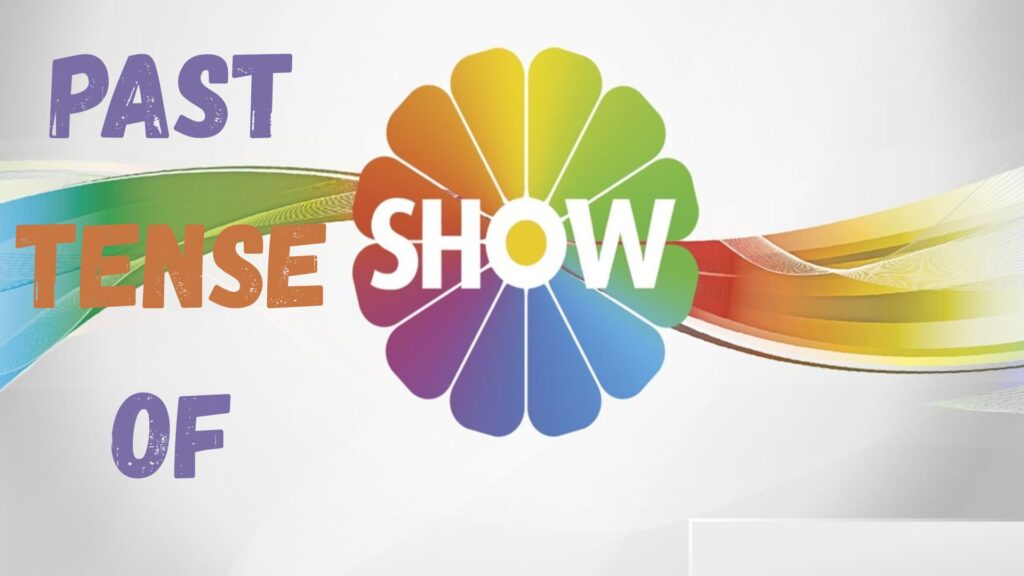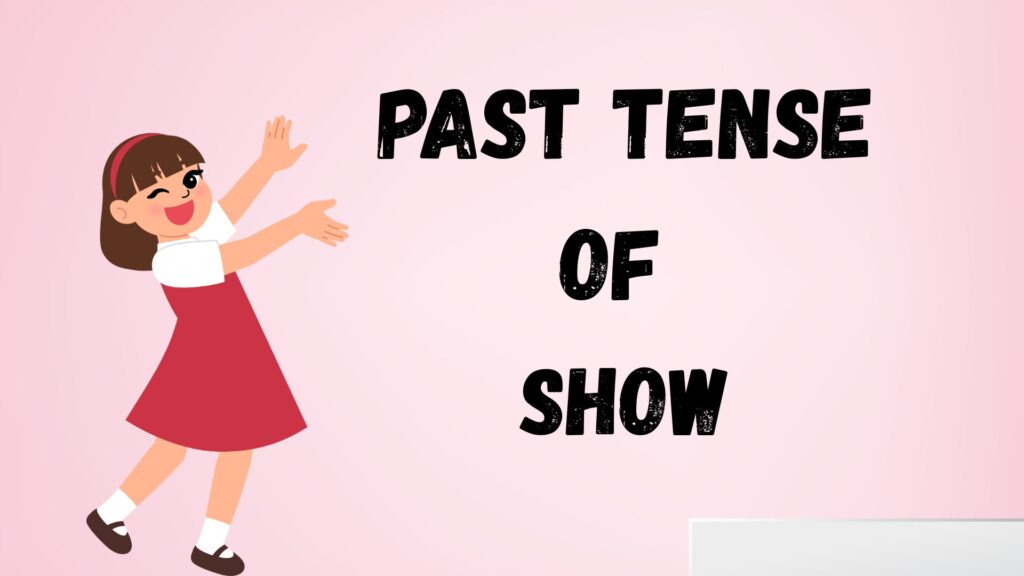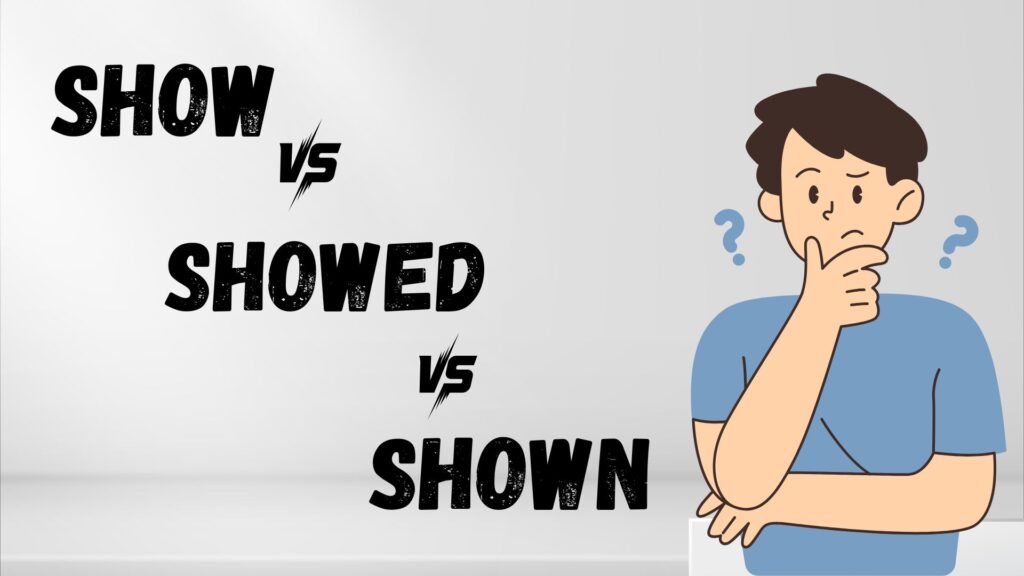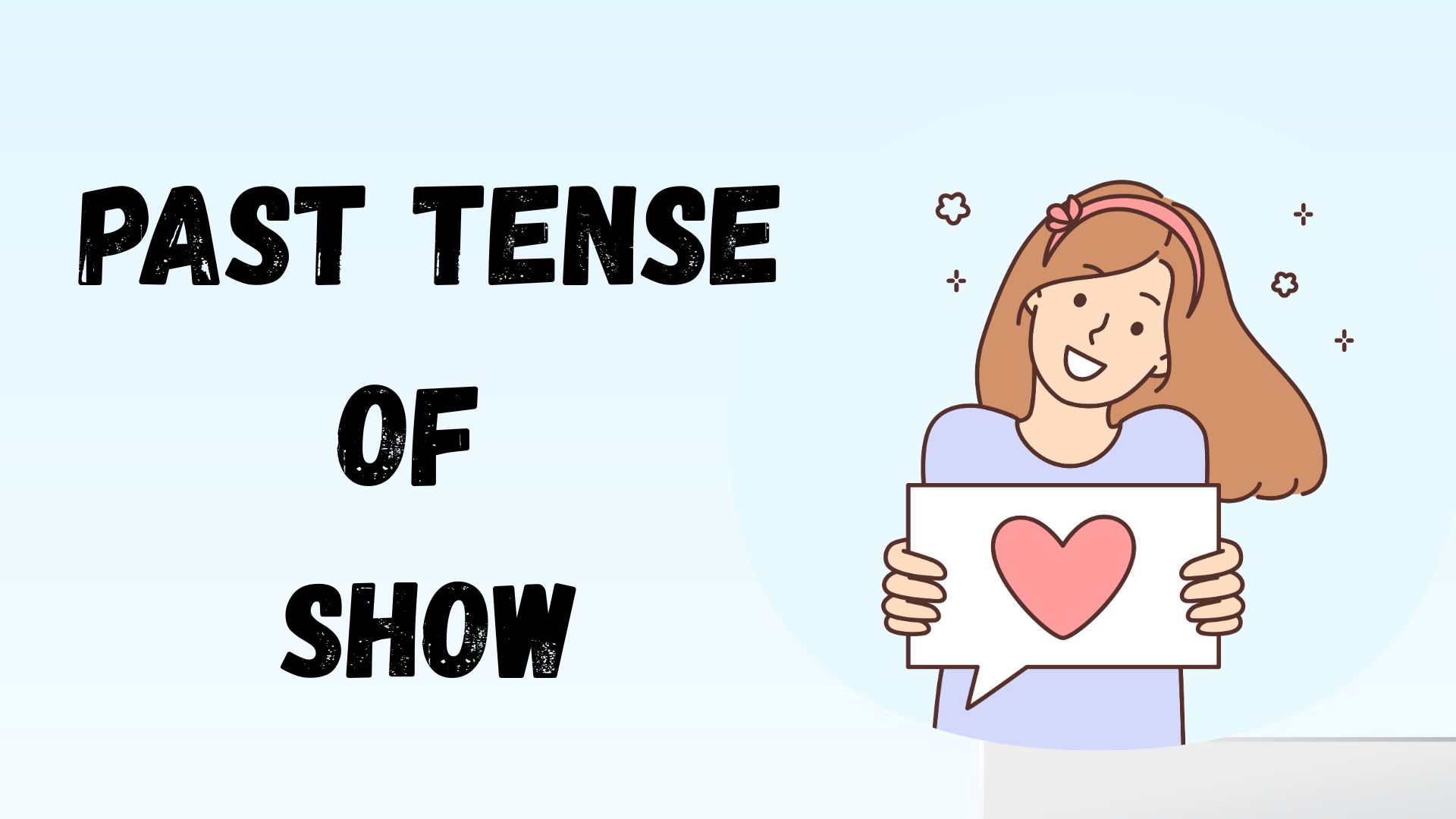When learning English, one of the trickiest things can be figuring out how to correctly use irregular verbs. The verb “show” is no exception. Should you say “I showed him the way” or “I have shown him the way”? Both sound right… but are they used the same way?
Let’s break it down in a simple, conversational way with plenty of examples, idioms, and grammar tips you can actually use.
What’s the Past Tense of Show?

To start with the basics:
- The simple past tense of show is showed.
- The past participle of show is shown.
That means:
- You’d say, “I showed the photo to my friend yesterday.”
- And you’d also say, “I have shown that photo to many people before.”
These forms follow a standard pattern for irregular past participles, but it still trips people up especially when you factor in auxiliary verbs like has, have, or had.
Quick Table: Verb Conjugation of “Show”
| Tense | Verb Form | Example |
|---|---|---|
| Present Simple | show / shows | I show my work every day. |
| Past Simple | showed | She showed us her painting. |
| Present Perfect | have / has shown | We have shown our results already. |
| Past Perfect | had shown | He had shown that chart before the meeting. |
| Present Continuous | am / is / are showing | I’m showing you how to do it. |
| Past Continuous | was / were showing | They were showing the demo yesterday. |
| Future Simple | will show | The company will show the report tomorrow. |
| Present Perfect Continuous | have / has been showing | I’ve been showing progress lately. |
Scenario Example 1: Email Using “Showed”
Subject: Update on the Presentation
Hi Jessica,
I just wanted to let you know that I showed the prototype to the design team yesterday, and they seemed pretty impressed. They offered some valuable suggestions, which I’ll be incorporating this week.
Thanks again for your support!
Best,
Adam
This email uses the simple past tense because the action took place at a specific time in the past “yesterday.”
Scenario Example 2: Email Using “Shown”
Subject: Performance Metrics Review
Hey Martin,
As you requested, I’ve shown the quarterly stats to the executive board, and they were pleased with the results. We’re on track for a strong Q4.
Let me know if you need a copy of the report.
Regards,
Natalie
In this case, “have shown” is part of the present perfect tense, used when the time is not exact or when the past action still relates to the present.
Why Does English Have “Shown” Anyway?

The word “shown” comes from the Old English verb sceawian, meaning “to look at” or “to see.” Its evolution traveled through Proto-Germanic (skauwojanan) and later forms that began to adopt the past participle “shown.”
This makes “show” an irregular verb, meaning it doesn’t follow the standard “-ed” rule for past tense and past participle forms.
That’s why you get:
- show → showed (past)
- show → shown (past participle with has/have/had)
Common Grammar Rule: Use “Shown” with Helper Verbs
In modern grammar, whenever you’re using a perfect tense, you’ll need the past participle, which is “shown.” And that’s where auxiliary verbs like have, has, had come in.
Here are a few quick rules:
- ✅ I have shown the results.
- ✅ He had shown interest before.
- ✅ We’ve shown our portfolio many times.
But don’t write:
- ❌ I have showed him the plan.
- ❌ She had showed the graph before the deadline.
These are common grammar mistakes, especially for learners of English.
Idioms and Phrases Using “Show”
English is full of idiomatic expressions that use “show.” Some use different verb forms, but most maintain the root “show.”
- Show of hands – “Let’s take a quick show of hands. Who agrees?”
- Show off – “Stop trying to show off in front of the guests.”
- Show the ropes – “Could you show the new intern the ropes?”
- Show no mercy – “The competition showed no mercy.”
- Go to show – “It just goes to show that hard work pays off.”
- Show one’s true colors – “When she lost, she really showed her true colors.”
These idioms keep “show” feeling fresh and colorful in speech and writing. They also make your English sound more natural and expressive.
Show vs. Showed vs. Shown: What’s the Difference?

Let’s clarify the core differences:
| Form | Function | Used With | Example |
|---|---|---|---|
| Show | Present tense | I, you, we, they, he/she | I show up every day. |
| Showed | Simple past | No helper verb | She showed me the app. |
| Shown | Past participle (perfect tenses) | Has, have, had | We’ve shown results already. |
Common Mistakes to Avoid
Even native speakers get confused! Here are a few incorrect vs. correct examples:
- ❌ He has showed them the data.
✅ He has shown them the data. - ❌ I had showed the report before.
✅ I had shown the report before. - ❌ We were showed the schedule.
✅ We were shown the schedule. (passive voice)
Tip: If you see an auxiliary verb, think shown, not showed.
Practice Questions
Try these on your own (answers below):
- I _____ the email to the client yesterday.
- We’ve already _____ the plan to the team.
- She had _____ her portfolio before the interview.
- They _____ us the way to the conference room.
- I’ve never been _____ anything like this before!
Answers:
- showed
- shown
- shown
- showed
- shown
Wrap-Up: Keep It Clear and Confident
Understanding the difference between “showed” and “shown” can seriously improve your writing and speaking. Remember:
- Use “showed” for simple past (no helper verbs).
- Use “shown” for perfect tenses (with have, has, or had).
- Watch out for idioms and passive constructions they often prefer shown.
And don’t forget to practice! English is full of irregular verb forms, but with time, they’ll become second nature.

